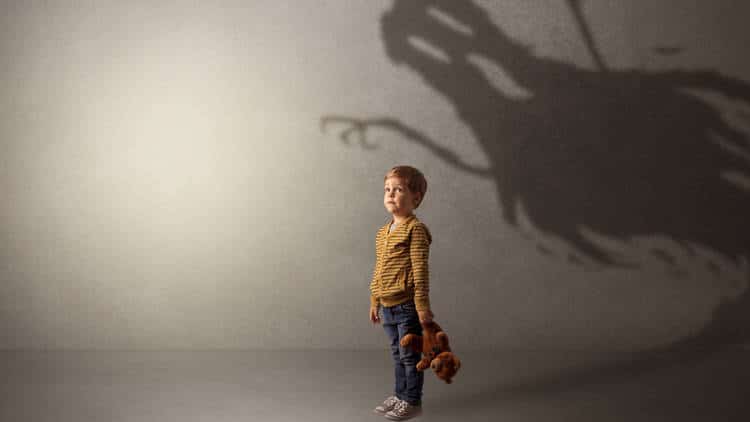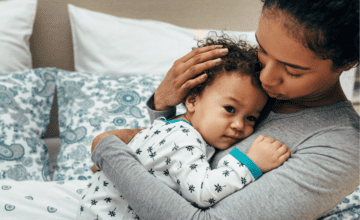Your toddler may have other fears that are less easy to explain. Monsters under the bed, the neighbor kids in Halloween costumes, the vacuum cleaner. Here’s why young children often develop fears in the toddler years, and suggestions for handling your toddler’s Halloween fears.
Why Toddlers Develop New Fears
Here’s what’s happening developmentally when your toddler suddenly becomes scared:
-
Their memory is improving. Toddlers can now recall past experiences and anticipate what might happen next. If they remember getting a shot, they’ll expect it again.
-
They crave predictability. Toddlers have clear ideas of what people and things should look like. Masks and costumes break those “rules,” which can be unsettling.
-
Their imagination is growing fast. At this age, the line between real and pretend is blurry. A dragon from a bedtime story could feel as real as the family cat.
-
Logic hasn’t kicked in yet. You know there’s no such thing as monsters under the bed—but your toddler doesn’t. To them, those fears feel very real.
Tip: If your toddler seems “suddenly scared,” remember—it’s part of healthy emotional development. Their growing mind is learning how to make sense of a big, unpredictable world.
Making Halloween Fun (and a Little Less Frightening)
You’ve been eagerly awaiting your child’s adorable costume, only to find your scared toddler wants nothing to do with it. Don’t worry. With a little preparation, you can make Halloween enjoyable and safe.
-
Play dress-up early. Introduce friendly costumes in the weeks before Halloween. Let your child touch and explore the fabric or try on a silly hat.
-
Practice trick-or-treating. Knock on a bedroom door, say “trick or treat,” and pretend to collect candy to make the experience familiar.
-
Read about Halloween together. Storytime helps children know what to expect. Try Clifford’s Halloween by Norman Bridwell or Apples and Pumpkins by Anne Rockwell.
-
Trick-or-treat during the day. Many communities offer daytime events that feel less spooky and more festive.
-
Stick to familiar faces. Visit friends or neighbors your child already knows. A warm greeting can ease anxiety.
-
Introduce the dark slowly. Take short evening walks with a flashlight before Halloween. Notice the moon, the sky, and shadows together.
Books like Flashlight by Liz Boyd and Orion and the Dark by Emma Yarlett are great for exploring nighttime themes gently.
For Child Care Providers: Supporting Little Ones Through Halloween Fears
Child care providers play an important role in helping toddlers handle fears—especially around high-stimulation holidays like Halloween.
Here are ways to support scared toddlers in your care:
-
Create a “Feelings About Halloween” corner. Include storybooks, puppets, and soft toys for children to express emotions through play.
-
Keep decorations gentle. Choose friendly pumpkins, smiling ghosts, and bright colors rather than dark, spooky décor.
-
Encourage pretend play. Offer non-scary dress-up items like hats, scarves, and animal ears so children can explore at their own pace.
-
Model calm curiosity. Acknowledge fears with empathy (“That mask looks different, doesn’t it?”) and show that you feel safe.
-
Communicate with families. Share what you observe and coordinate gentle strategies at home and in the classroom.
The Takeaway
When your toddler suddenly seems scared, it’s a sign of a growing, curious mind learning to understand the world. With empathy, preparation, and a little creativity, you can help your toddler overcome fears and discover that Halloween, and life’s little surprises, can be fun after all.





